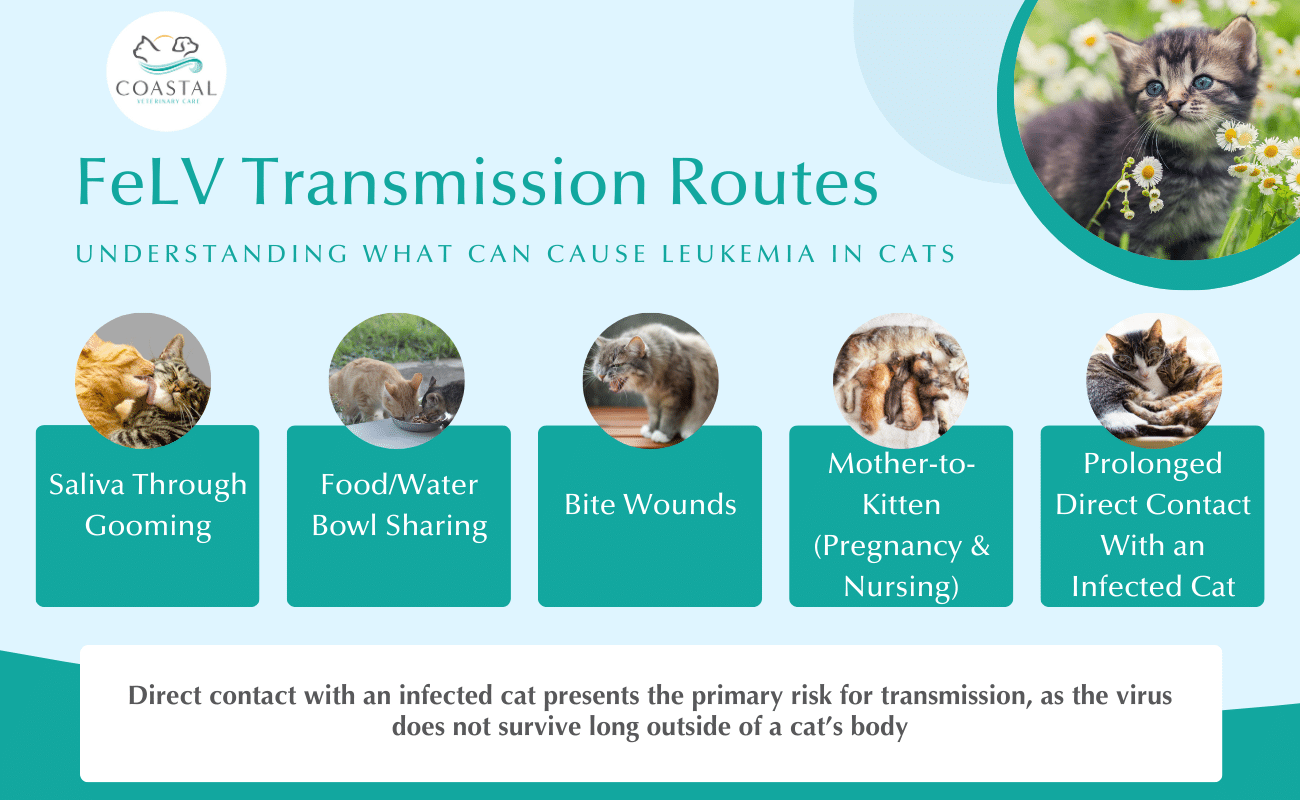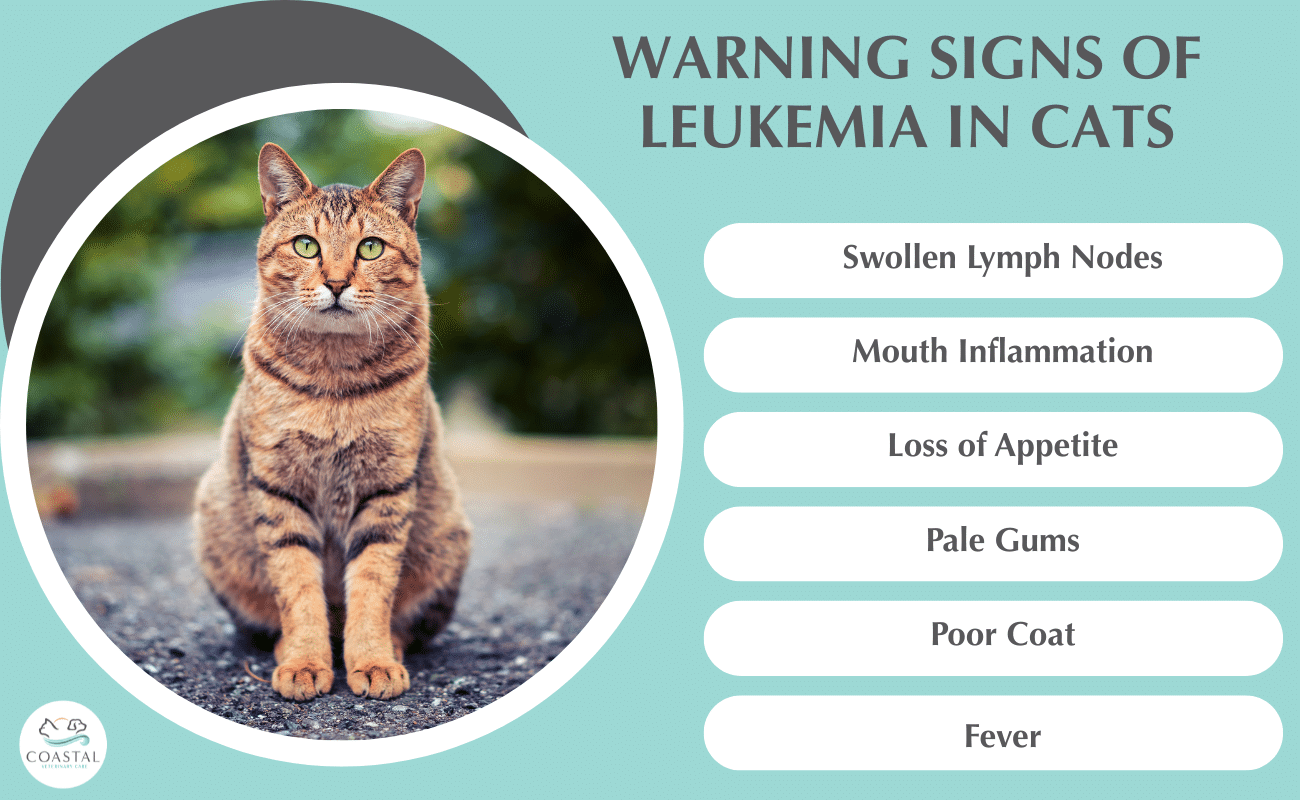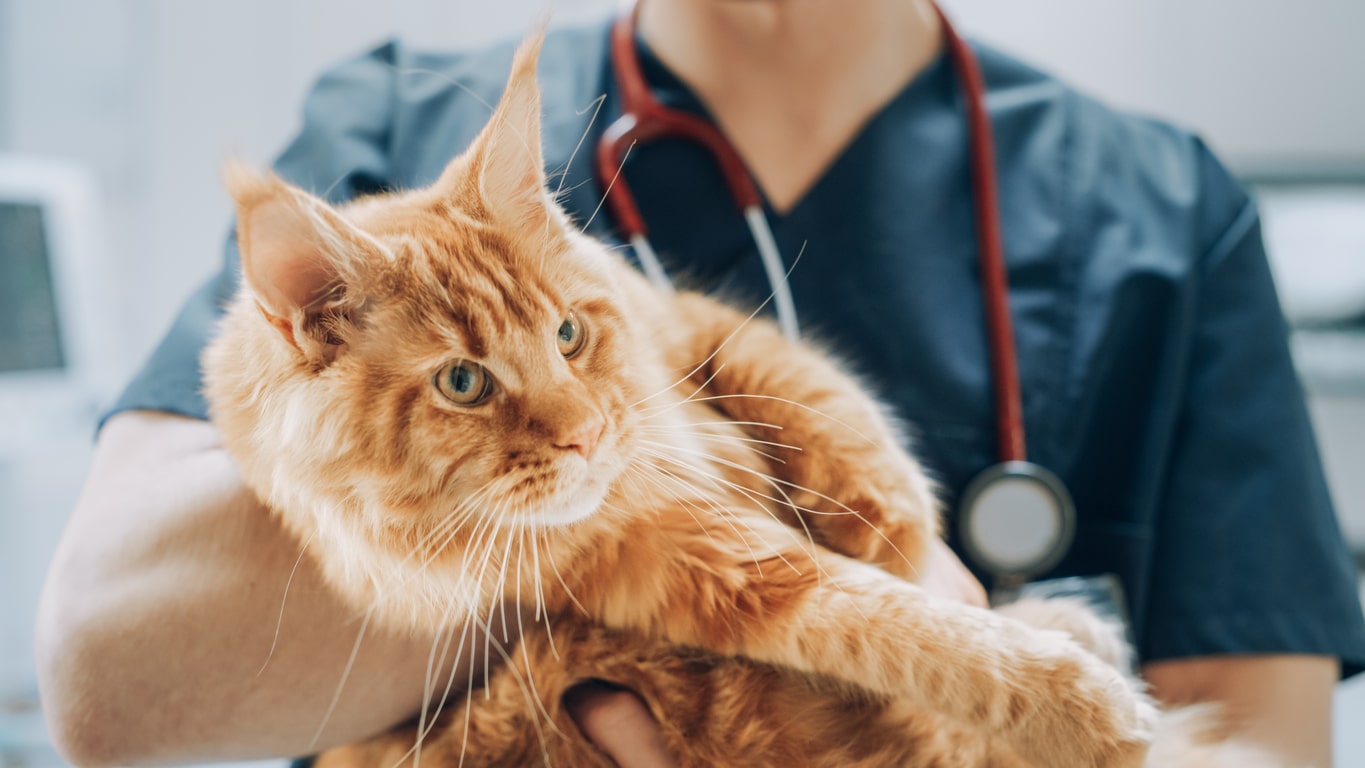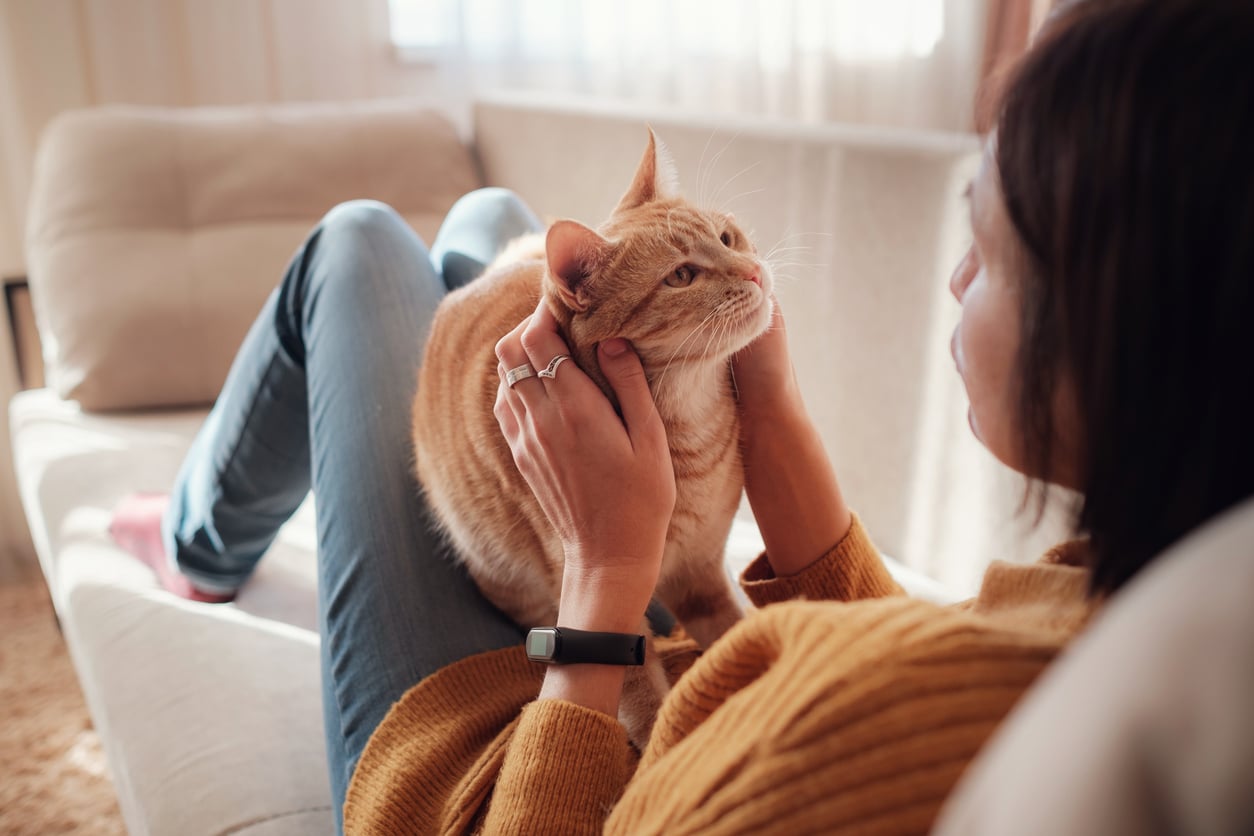Is Feline Leukemia Treatable? Symptoms, Signs, and Treatments
The Short Answer: While there’s no cure for feline leukemia virus (FeLV), the condition can be managed with proper veterinary care and supportive treatment. FeLV-infected cats can live quality lives, with median survival times of 2.5 years after diagnosis, though some cats live much longer.
Understanding FeLV and Its Types
What is Feline Leukemia?
Feline Leukemia Virus (FeLV) is a retrovirus that affects 2-3% of cats in the United States and Canada, though this percentage can rise to 30% in cats who are already ill or face higher exposure risks. As a retrovirus, FeLV has the unique ability to incorporate itself into a cat’s immune system, making it particularly challenging to eliminate. The virus primarily targets the immune system, weakening the cat’s natural defenses and leaving FeLV-infected cats vulnerable to secondary infections and diseases that wouldn’t typically affect healthy cats.
When FeLV enters a cat’s body, it begins replicating in the tissue of the throat before moving into the bloodstream. From there, it can spread to the bone marrow and other tissues, compromising the cat’s ability to fight off everyday infections. This interference with the immune system makes feline leukemia one of the most significant infectious diseases affecting domestic cats today.
Three Types of FeLV Infection
The way a cat’s immune system responds to FeLV exposure can follow three distinct paths, each with different outcomes:
- Abortive infection occurs in about 20-30% of exposed cats. In these cases, the cat’s immune system successfully fights off the virus before it can establish itself in the cat’s body. These cats never become FeLV-positive cats and develop immunity against future infections.
- Regressive infection develops in 30-40% of exposed cats. While the virus does enter the cat’s genetic material, the immune system prevents it from replicating actively. Cats with regressive infections typically don’t show clinical signs and can’t spread the virus, though the infection may reactivate if their immune system becomes compromised.
- Progressive infection, affecting 30-40% of exposed cats, represents the most serious form. The virus actively replicates in the bone marrow, leading to ongoing viral presence in the blood. These FeLV-infected cats can transmit the virus to others and face the highest risk of developing FeLV-related diseases.
Transmission Methods
FeLV spreads primarily through close contact between cats.
In infected cats, the virus is present in:
- Saliva
- Nasal secretions
- Urine
- Milk
Common transmission scenarios include:
- Mutual grooming between cats
- Sharing food bowls and litter boxes
- Bite wounds from infected cats
- Mother cats passing the virus to kittens during pregnancy or nursing
- Extended direct contact with FeLV-infected cats
The virus doesn’t survive long outside a cat’s body—typically just a few hours—which means casual contact with contaminated surfaces rarely leads to infection. Instead, direct contact with an infected cat presents the primary risk for transmission.

How Can I Tell if My Cat Has FeLV?
First Signs of FeLV
Early detection of feline leukemia virus (FeLV) plays a central role in managing the condition and improving outcomes. During the initial stages, FeLV-infected cats often show no obvious clinical signs. However, as the virus progresses, cats may develop several noticeable symptoms.
The early warning signs of feline leukemia include:
- Loss of appetite and gradual weight loss
- Poor coat quality and appearance
- Pale gums
- Swollen lymph nodes
- Recurring fever
- Mouth inflammation and gingivitis
These symptoms may come and go, as infected cats can experience cycles of illness followed by periods of apparent health. This pattern makes it particularly important to pay attention to any changes in your cat’s health.

Diagnostic Process
Veterinarians use several testing methods to accurately diagnose FeLV infection, as no single test can provide a complete picture. The main diagnostic tools include:
- ELISA Test
The immunosorbent assay (ELISA) test serves as the initial screening tool. This blood test can be performed in your veterinarian’s office and detects viral proteins in the blood. It’s particularly useful for identifying active infections.
- IFA Test
If the ELISA test is positive, your veterinarian will likely recommend an IFA test. This laboratory test looks for viral particles inside white blood cells and helps confirm whether the virus is established in the bone marrow.
- PCR Test
Polymerase chain reaction testing offers the most detailed analysis, as it can detect viral genetic material even when the virus isn’t actively replicating. This test helps identify cats with hidden or dormant infections.
Importance of Follow-up Testing
After initial positive results, follow-up testing becomes a necessary part of the diagnostic process. Testing should be repeated after 3-6 weeks to rule out false positives, which can occur during very recent infections.
A second round of testing typically happens 6-12 weeks after the first positive result. This timeline allows veterinarians to determine whether the FeLV infection is progressive (continuing to replicate) or regressive (controlled by the immune system). This distinction significantly impacts both treatment approaches and long-term outlook.
Regular monitoring of FeLV-positive cats through blood work and physical examinations helps track the progression of the disease and guides treatment decisions. Your veterinarian will recommend an appropriate testing schedule based on your cat’s specific situation.
Treatment Options and Management

Supportive Care Approaches
While there’s no cure for feline leukemia virus, supportive care plays a major role in maintaining a good quality of life for FeLV-infected cats. The focus is on preventing and addressing secondary infections that commonly occur due to the weakened immune system.
- Regular blood tests help track the progression of the virus and catch complications early.
- A balanced, nutritious diet becomes particularly important, as proper nutrition helps support the cat’s immune system.
- Many FeLV-positive cats benefit from appetite stimulants and supplements when needed.
Medical Interventions
Treatment options typically center on addressing specific clinical signs as they arise.
- Antibiotics are prescribed to fight bacterial infections, which are common due to the compromised immune system.
- Blood transfusions may become necessary if the cat develops severe anemia.
- Anti-inflammatory medications can help manage symptoms like fever and inflammation.
- Some infected cats may need additional treatments such as fluid therapy to maintain hydration or medications to address specific complications.
Quality of Life Considerations
Pain management is an essential component of care, particularly if leukemia develops or during periods of illness. The cat’s environment should be modified to reduce stress and accommodate any physical limitations.
- This might mean providing easily accessible litter boxes, comfortable resting areas, and a quiet space away from other cats.
- Dietary adjustments are often necessary – some cats need highly palatable foods or special formulations to maintain weight and strength.
- Regular veterinary check-ups, typically every 4-6 months for stable FeLV-infected cats, help monitor the disease progression and adjust care plans as needed.
Conclusion

While there’s no cure for feline leukemia virus, we can help FeLV-infected cats live comfortable lives through supportive care and treatment of secondary infections. Most cats with FeLV can live about 2.5 years after diagnosis, with some cats living much longer, especially those with regressive infections.
Prevention
The best defense against FeLV is prevention. Keep cats indoors, get the FeLV vaccine for at-risk cats, and blood test any new cats before introducing them to your household. The FeLV vaccination is particularly important for kittens and outdoor cats, though it doesn’t provide 100% protection. Separate infected cats from uninfected cats and don’t share food bowls or litter boxes between them.
If you notice any changes in your cat’s health or behavior, don’t wait to seek medical care. Our Myrtle Beach veterinary team provides comprehensive FeLV testing and can help create a tailored prevention plan for your furry family member. Contact us today to protect your cat’s health and discuss vaccination options.
Choose Coastal Veterinary Care in Myrtle Beach, SC
At Coastal Veterinary Care, we can help you determine an appropriate veterinary schedule that best supports your pet’s needs. From planning regular routine visits to understanding what to look for to identify when your pet may need to be seen to evaluate a specific injury or illness, we are here to help you make sure your pet gets the best possible care. Contact us today to learn more about why we are a trusted choice among pet owners in the Myrtle Beach, SC, area or to schedule an appointment!
